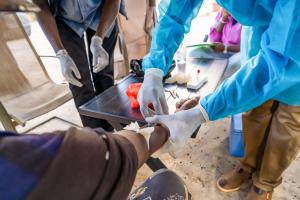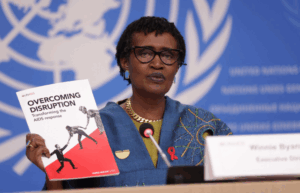Postpartum hemorrhage is one of the leading causes of death among women.
The serious medical emergency occurs when a woman experiences excessive bleeding after childbirth. PPH is a major contributing factor towards maternal morbidity and mortality worldwide.
The condition is typically defined as blood loss of more than 500 milliliters after a vaginal delivery or more than 1000 milliliters after a cesarean section.
But what really causes PPH? Uterine atony , which refers to failure of the uterus to contract after delivery thereby leading to excessive bleeding.
Another cause is retained placental tissue, parts of the placenta remain in the uterus which may cause bleeding. Factors such as lacerations, meaning tears in the vagina, cervix or uterus during delivery may lead to PPH.
Placenta accreta is another cause, the placenta may grow too deeply into the uterine wall. And lastly, the term scientifically called coagulopathy or blood clotting disorders.

The causal list may not be exhaustive but suffice to say that those are some of the major triggers of PPH, according to medical research and findings.
What are some of the symptoms to look out for ? Heavy bleeding is one of them , the soaking of more than one pad or tampon per hour.
Prolonged bleeding is another indicator – Bleeding that lasts more than 24 hours. Pale or cool skin and rapid heartbeat including dizziness or fainting.
How can PPH be effectively managed and treated? First, uterine massage or massaging of the uterus to help it contract , has proved to more useful according to health experts.
Second, uterotonic medications, these are medications used to stimulate uterine contractions.
Third, blood transfusions which refers to replacing lost blood. Though other medical interventions can be explored in this case, which can prove equally effective in managing and boosting blood levels.
Fourth, surgical interventions. Meaning repairing lacerations or removing retained placental tissue.
How can PPH be prevented? Active management of the third stage of labor, that is the administration of uterotonic medications and controlled cord traction.
Uterine massage , the regular massage of the uterus to help it contract and monitoring for bleeding or close observation for signs of excessive bleeding.
Key to PPH prevention and management. An emergency trolley should always be present in the delivery room.
Call for help immediately upon PPH diagnosis. Coordinated team work is also vital as it saves life.
Continuously monitor the woman and be vigilant for signs of shock.
Communicate with the woman and reassure her. Tell her what you are doing and why.
Flavia Kangwa , a registered midwife in the Ministry of Health, has expressed hope that the new drug that the ministry has introduced known as Heat-Stable Cabertocin will contribute to the proper management of PPH.
Speaking in Kitwe recently at the just ended WHO Trainer of Trainer workshop, Ms Kangwa advised the healthcare providers who received the training to ensure that the knowledge gained is passed on.
” Some people have the tendency of keeping knowledge to themselves, which is not good. It is expected that all trainers share what they have learned with others in their respective facilities,” she said.
Ms Kangwa said bleeding after birth has continued to claim the lives of many women adding that the best practices will mitigate maternal mortality.
Ministry of Health Zambia







OTHER ARTICLES
Rift Valley Fever in Senegal: On the Frontline to Protect Communities
Zambia : commemorates world AIDS day
UNAIDS releases its 2025 World AIDS Day report: Overcoming disruption, transforming the AIDS response